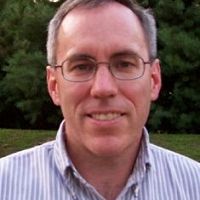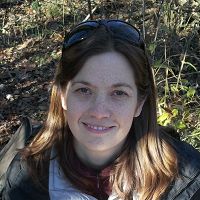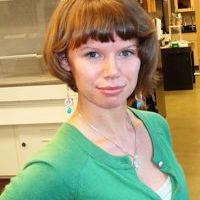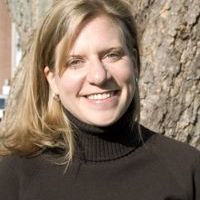2. Co-evolution of Critical Zone Structure, Hydro-Bio-Geo-Chemical Function and Carbon Complexation
Q2.1: How do physical and hydro-chemical weathering produce mineral SA and pore structure within the critical zone and how are these processes altered by biological C cycling and landscape redistribution of water and solutes?
Q2.2: How do increases in mineral SA and pore space from mineral weathering alter water retention, water and gas transport, and carbon-mineral interactions? Do these changes provide a positive feedback that increases rates of mineral weathering?
Q2.3: How do agricultural practices that physically disturb colluvial soil alter the C-cycle, moisture retention, and mineral weathering?
-
We attempt to understand how chemical and physical weathering interact with carbon cycle and vadose and phreatic zone hydrology in generating mineral surface area (SA) and pore structure within the CZ. Unlike the first round of CRB-CZO, we explicitly investigate the feedbacks between hydrology and weathering processes. New focus on pore structure and its sensitivity to land use changes, considering its critical nature in soil water storage, tightly couples the proposed activity to sustainability issues.
We begin with competing theories on weathering. Efforts to model geochemical properties of earth surface as a part of landscape evolution have been based on the view that availability of minerals - controlled by denudation - limits chemical weathering (eg., Riebe et al., 2004; West et al., 2005). Here, the minerals’ availability has been equated to reactive mineral surface (eg., Mudd and Yoo 2008b, White and Brantley 2003). The larger the mineral specific surface area (SSA), the greater the mineral dissolution rate per given mass of minerals. Taking this view further, we theorize that there is a positive feedback between mineral dissolution rate and the production rate of mineral SA. Likewise, the larger the pore space, the greater the production rate of pore space and water flux. This concept, however, forces us to predict a runaway positive feedback between chemical weathering and the generation of mineral SA and pore space, unless erosion rejuvenates the critical zone.
This view lacks the treatment of hydrology. Hydrochemists have theorized that pore water, with increasing residence time, may reach thermodynamic equilibrium with the surrounding minerals and thus be incapable of dissolving minerals (eg., Lasaga 1998; Lasaga et al., 1994). Testing this concept at landscape scales has proven challenging. While mineral-water interactions occur at the pore scale and are influenced by matric potential – soil moisture – conductivity relationships (i.e., p-s-k relationships), the water chemistry inherently depends on the flux and pathways of the water at a given landscape position (eg., Green et al., 2006; Maher 2010). The relationship between a landscape / profile position and conditions up and down gradient can strongly influence local mineral-water interactions. Recently, a series of studies have incorporated length scales of water pathways - which are determined by the balance of erosion and production of weathering profiles - to test the validity of thermodynamic equilibrium as a limiting factor on weathering at landscape scales (Hilley et al., 2010; Maher 2010).
We attempt to reconcile the two competing theories by examining the coevolution of biogeochemical and hydrological properties of the CZ. Our work should be seasoned with other important biogeochemical processes that the first phase of our CZO study found to significantly affect mineral SA. First, abundances of secondary iron oxide were found to largely control the spatial variation of mineral SSA across the topographic and land use gradients (Yoo et al., 2011). This indicates that mineral SSA is subject to local redox conditions at time scales far shorter than that for landscape evolution. Second, fraction of mineral surface coated by OC varies from negligible to complete coverage and varies systematically with soil depth, landscape position, and land use practice (Yoo et al., 2010), suggesting its potentially important role in the feedbacks between mineral weathering and carbon cycle. Lastly, depending on the balance of OC decomposition and gas diffusion, CO2 concentration in subsoils could be as high as several %, which should result in significantly lower pore water pH that will affect mineral dissolution. Building on this integrated theory with important caveats from our observations, we ask:
Q2.1: How do physical and hydro-chemical weathering produce mineral SA and pore structure within the critical zone and how are these processes altered by biological C cycling and landscape redistribution of water and solutes?
H2.1: Production rates of mineral SA are highest within the physically mixed colluvial soil where chemically-reactive water, fluctuating soil moisture, temperature, acidity, and oxidation interact. The rates decline with depth, but a secondary peak occurs at the capillary zone with shifting redox potentials due to precipitation of secondary iron oxides with large SA.Q2.2: How do increases in mineral SA and pore space from mineral weathering alter water retention, water and gas transport, and carbon-mineral interactions? Do these changes provide a positive feedback that increases rates of mineral weathering?
H2.2: Chemical weathering generates pore space and mineral SA which promote moisture retention and result in altering pore water residence time, mineral dissolution, DOC-mineral interactions, and advection and diffusion of O2 and CO2. Strong feedbacks among chemical weathering, moisture content, and matric potential exist within the saprolite, placing an important control on mineral weathering.Q2.3: How do agricultural practices that physically disturb colluvial soil alter the C-cycle, moisture retention, and mineral weathering?
H2.3: In croplands, as bioturbation is replaced by tillage, minerals are less densely coated by OM and OM coated minerals extend to deeper depths. These altered C-mineral interactions significantly affect mineral-water interactions and subsequently mineral weathering. -
Contacts
-
Christina, INVESTIGATOR
-
Christina, INVESTIGATOR
11 People
INVESTIGATOR
.(JavaScript must be enabled to view this email address), 610.268.2153 x 263
Stroud Water Res. Ctr.
Univ. Delaware
Carbon-mineral complexation, transport and fate
INVESTIGATOR
.(JavaScript must be enabled to view this email address), 615.343.1144
Vanderbilt
Hillslope and watershed scale hydrological modeling
INVESTIGATOR
.(JavaScript must be enabled to view this email address), 302.831.0541
DENIN
Modeling of subsurface groundwater, solute and gas fluxes
INVESTIGATOR
.(JavaScript must be enabled to view this email address), 302.831.8877
DENIN
Dissolved organic matter sources, fluxes and fingerprints
Cross-CZO INVESTIGATOR
.(JavaScript must be enabled to view this email address), 612.624.3400
Univ. of Minnesota
Univ. Delaware
Stroud Water Res. Ctr.
Hydrology and biogeochemistry
COLLABORATOR
, 302.831.0608
DENIN
DENIN
Environmental & aqueous geochemistry, hydrogeology, sustainability and water resources.
INVESTIGATOR
.(JavaScript must be enabled to view this email address), 302.831.3218
Univ. Delaware
Forest hydrology and biogeochemical fluxes; sensor network development.
INVESTIGATOR
.(JavaScript must be enabled to view this email address), 302.831.4197
Univ. Delaware
Interactions between groundwater and surface water in the streams and estuaries
GRAD STUDENT
.(JavaScript must be enabled to view this email address)
Univ. Delaware
Geomorphology, Hydrology
GRAD STUDENT
.(JavaScript must be enabled to view this email address)
Univ. Delaware
Soil Chemistry, Hydrogeology
.(JavaScript must be enabled to view this email address), 612.624.7784
Univ. of Minnesota
Hillslope generation and transport of mineral surfaces for complexation with carbon
Alumni-Former
Univ. Delaware
Ecohydrology; Forest Ecology
-
-
Featured Publications
2011
Rates of soil mixing and associated carbon fluxes in a forest vs tilled agricultural field: implications for modelling the soil carbon cycle. Yoo, K., Ji, J., Aufdenkampe, A., and Klaminder, J. (2011): Journal of Geophysical Research - Biogeosciences 116:G01014.
2010
Case Study: The Role of Pedology In Christina River Basin CZO. Yoo, K., Aufdenkampe, A., and. Sparks, D.L. (2010): Invited Talk, ASA-CSSA-SSSA 2010 International Annual Meetings, "Green Revolution 2.0: Food + Energy and Environmental Security," Long Beach, CA, Oct. 31 - Nov. 3.
Explore Further












